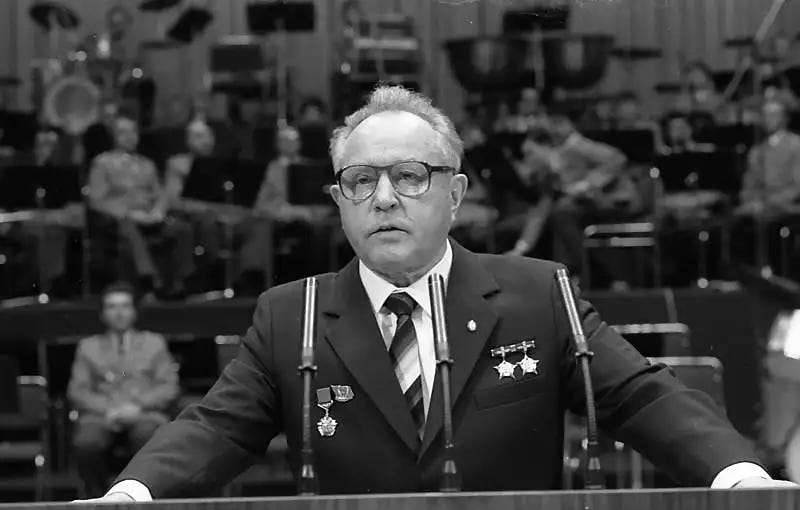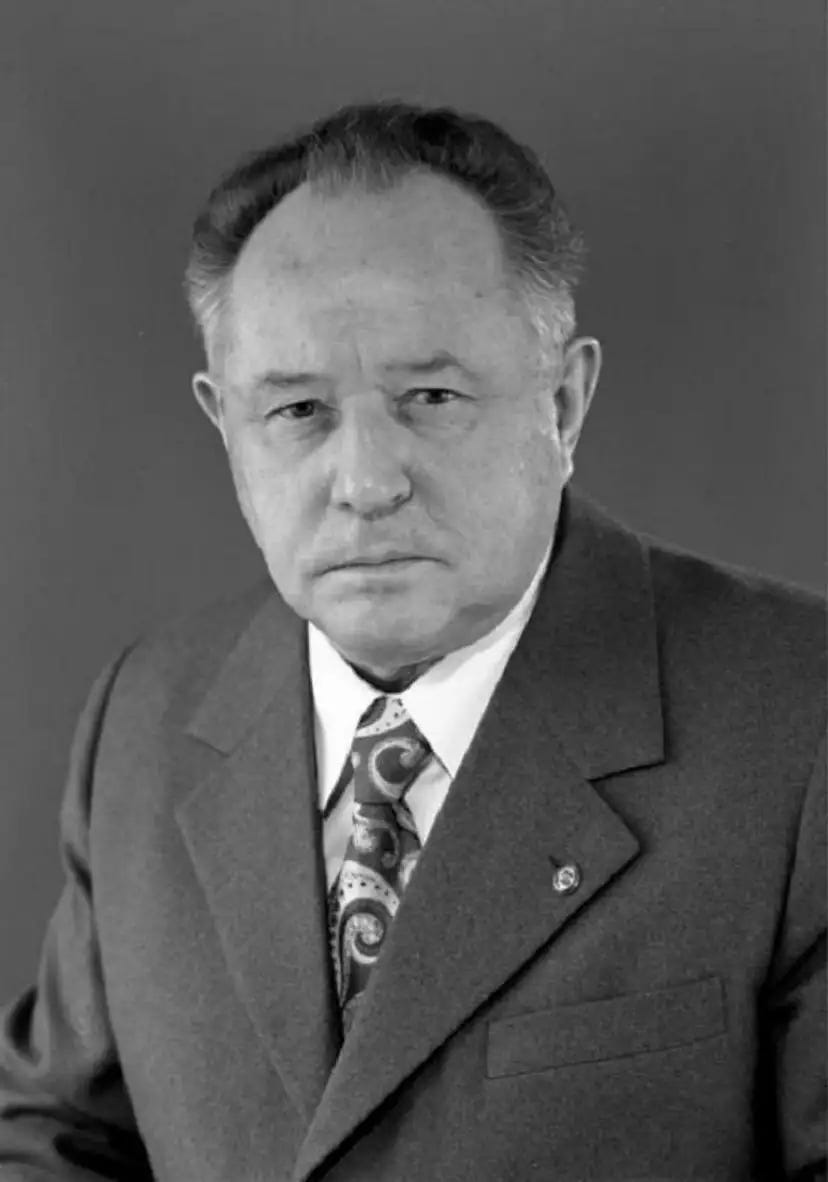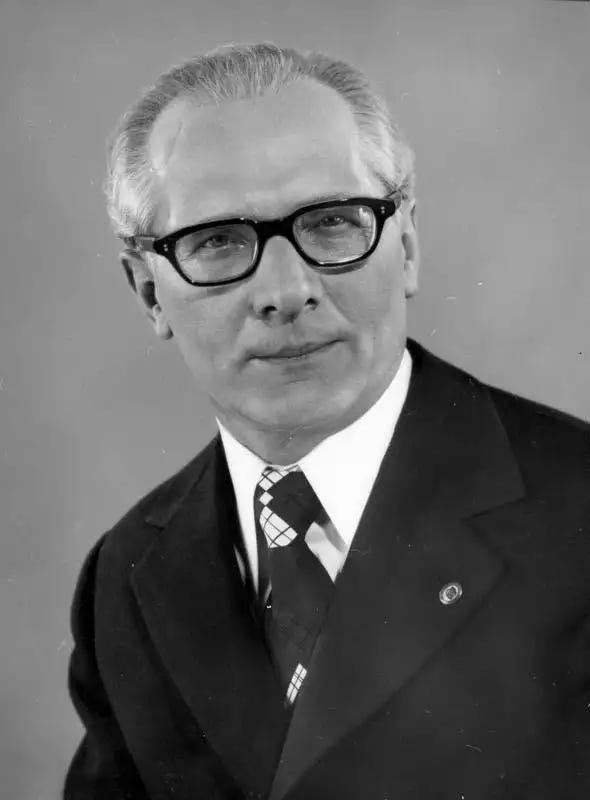Erich Mielke: The Stasi File That Could Have Brought Down Erich Honecker
Erich Honecker had lots to be wary of as the Berlin Wall fell...especially the secrets that Erich Mielke had on his boss.

On the 15th January 1990, thousands of East German protesters stormed the Stasi Headquarters in Berlin. Once seen as the centre of civil oppression where Erich Mielke’s Stasi operated with impunity, the protestors stormed the building without fear as the GDR (German Democratic Republic) crumbled following the fall of the Berlin Wall the previous November.
Their actions that night preserved hundreds of thousands of documents that documented the citizens of the GDR in detail. By 1989, the Stasi held archives containing nearly 180 kilometres of documents focusing on the State's activity during their 40-year reign. The state security of the GDR employed 91,000 full-time employees and up to 189,000 unofficial spies who provided them with intel on their citizens. Those who stormed the headquarters that night helped to preserve the history of the organisations deepest and darkest secrets. Today, files that were destroyed either by hand or by the burnt-out shredders found soon after, are being painstakingly pieced back together to reveal even more secrets.
Found inside the head of the Stasi’s office safe was something special. It was where Erich Mielke kept his most precious secrets. Inside the safe was a red imitation leather briefcase filled with highly confidential files. There was one file, in particular, that shows us the power of the Stasi when it came to help run the state of the GDR. Whilst most stories of Stasi oppression mainly centre around the everyday citizens of East Germany, this one focuses on the man who ran the GDR, Erich Honecker.
Soon after Erich Honecker succeeded Walter Ulbricht in 1971, Mielke began to compile his file on Honecker. It was to remain highly confidential as the information and even seeking dirt on Honecker would have been considered highly treasonable even in the GDR. However, for Mielke, knowledge was power regardless of who it involved. What he uncovered about the GDR’s General Secretary would be kept under lock and key until the timing was right. It would lay dormant until 1989.
With the GDR facing more protests and defections in October 1989, a Politburo meeting was held to decide what the best course of action was. For Mielke, it would be the perfect opportunity to finally reveal that he had a file on the General Secretary himself. His 25-page file and its contents could have been revealed right then but Honecker not only knew what that file contained but also just how meticulous Mielke would be. Without revealing the contents of the file, Honecker resigned. The public would be told that because of his ill health it was best if he stood aside for a more vibrant leader. In the eyes of the faithful, his reputation would be left untarnished.
The contents of the file would not be made public until 2011, long after both Mielke and Honecker had died. The German newspaper, Bild am Sonntag, would reveal the long-kept secrets of Erich Honecker.
But what did the file contain that was so damning? To know that we first have to look at the story that Honecker himself peddled that allowed him to reach the very top of the GDR. His was a story of defiance to the Nazi party and loyalty to his Communist comrades.
Arrested by the Gestapo for being a political enemy of the state in 1937, Honecker would serve his time until the end of the Second World War. During that time, he later claimed in his autobiography: “Neither the physical and psychological tortures I suffered at the hands of the Gestapo, nor the countless interrogations by fascist judges, were able to weaken my communist convictions.” In the eyes of his supporters, Honecker was an anti-fascist hero, a comrade who was resolute even at the time of adversity. It would be a role he would play throughout his time rising the ranks of the SED before claiming the ultimate prize as the GDR’s leader. Mielke knew the truth and had been sitting on it ever since Honecker replaced Ulbricht.
Mielke’s dossier told a completely different story to the one that Honecker had successfully ingrained into society. It showed us a man who would do anything to save his own skin. During his imprisonment by the Nazi Party in 1937, Honecker was prepared to make a number of deals including fighting on behalf of Hitler on the front line. The file also claimed that Honecker was far from the loyal comrade many thought. The dossier claimed that Honecker gave “quite wide-ranging evidence” to the Gestapo regarding fellow communists imprisoned alongside him. In other words. he was the prison snitch who was prepared to sell out his fellow comrades for his own benefit.
The lies and backstabbing of comrades might have been damning to his career if the word ever got out, but Honecker would go further. The file states that in 1939, Honecker asked his father to press for a political amnesty and got him to petition the Nazi authorities with a letter claiming that his son had renounced Communism “for good”. The future leader of the GDR, a state that was showcased as a socialist paradise by the Soviet Union was led by a man prepared to renounce communism. This was the information that Honecker was so scared of.
Both Erich Mielke and Erich Honecker would see the GDR fall only a few weeks after that explosive Politburo meeting in October 1989. For Mielke, it was the final throw of the dice to keep the GDR afloat. For Honecker, it remained about himself and what he could gain from the situation. Leaving his position, he knew that his secret would be safe, for now. Honecker would pass away in 1994 knowing that his secret negotiations with the Nazi Party during his time in prison could be revealed at any time. Mielke would never say a word right up to his death. A man who knew many secrets opted to take most of them to his grave.
It would be the bureaucratic nature of the Stasi that would eventually reveal the state’s most guarded secrets. An organisation that prided itself on its meticulous archives and pen-pushing understood the power of files and the damage they could cause. Even the glimpse of one’s name on the file could be enough for an individual to start sweating. Now those files, unlike the men who used them for their own pursuit of power, are talking in ways we could never imagine. Given the vast archival remains, there are still many more secrets yet to be revealed.





The GDR was the German Democratic Republic which was also known as East Germany.